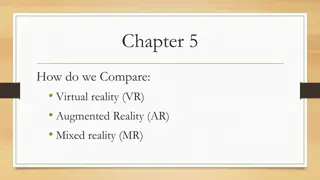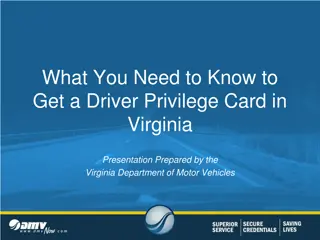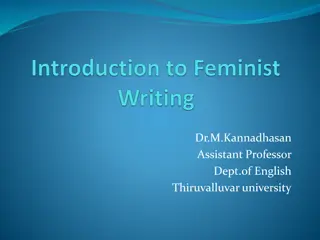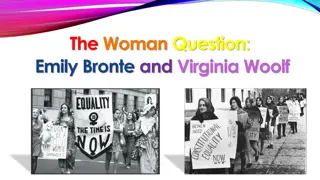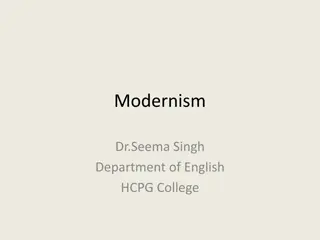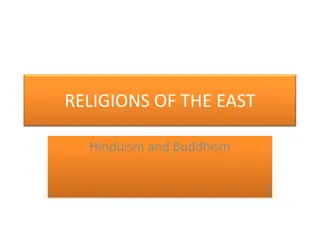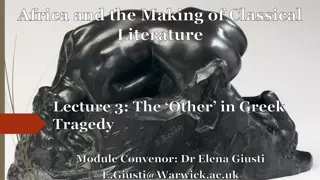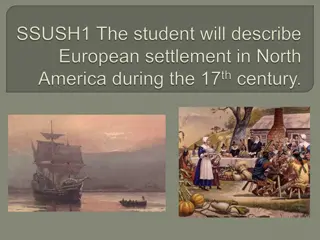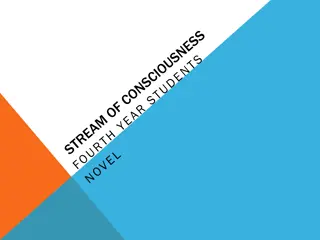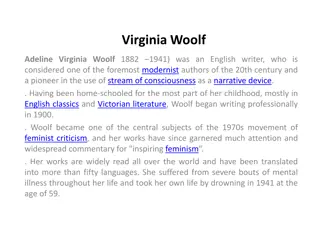Exploring Reality vs. Illusion in 'Who's Afraid of Virginia Woolf?'
Edward Albee's play, "Who's Afraid of Virginia Woolf?" delves into the complexities of the marriage between Martha and George, a middle-aged couple. Set over three acts, the play confronts themes of truth versus illusion, with characters struggling to distinguish between the two. Albee's exploration of living with or without false illusions challenges perceptions and invites introspection.
Download Presentation

Please find below an Image/Link to download the presentation.
The content on the website is provided AS IS for your information and personal use only. It may not be sold, licensed, or shared on other websites without obtaining consent from the author. Download presentation by click this link. If you encounter any issues during the download, it is possible that the publisher has removed the file from their server.
E N D
Presentation Transcript
WHO IS AFRAID OF VIRGINIA WOOLF: TITLE MA IV SEM PAPER XIV DEPARTMENT OF ENGLISH GOVT COLLEGE PAONTA SAHIB
Who's Afraid of Virginia Woolf? is a play by Edward Albee first staged in October 1962. It examines the complexities of the marriage of a middle-aged couple, Martha and George. Late one evening, after a university faculty party, they receive an unwitting younger couple, Nick and Honey, as guests, and draw them into their bitter and frustrated relationship.
The play is in three acts, normally taking a little less than three hours to perform, with two 10-minute intermissions. The title is a punon the song "Who's Afraid of the Big Bad Wolf?" from Walt Disney's Three Little Pigs(1933), substituting the name of the celebrated English author Virginia Woolf. Martha and George repeatedly sing this version of the song throughout the play
In English The title is a pun on the song "Who's Afraid of the Big Bad Wolf?" from Walt Disney's Three Little Pigs (1933), substituting the name of the celebrated English author Virginia Woolf. Martha and George repeatedly sing this version of the song throughout the play
Reality and illusionEdit Albee has said that the title of the play "means who s afraid of the big bad wolf who s afraid of living life without false illusions."[2][3]Albee s interest in the theme of reality versus illusion is expressed in a number of his plays. In discussing Who s Afraid of Virginia Woolf? he cites Nietzsche sinterpretation of the Apollonian/Dionysiandichotomy of ancient Greek drama, as described in The Birth of Tragedy. Albee says, "There was a time when people believed in deities. And then revolutions came industrial, French, Freudian, Marxist. God and absolutes vanished. Individuals find this very difficult and uncomfortable. All they have left is fantasy or the examination of the self."[4]According to Lawrence Kingsley, Albee s characters create illusions to help them evade feelings of their own inadequacy as "George and Martha have evaded the ugliness of their marriage by taking refuge in illusion. The play demonstrates "how his characters must rid themselves of falsehood and return to the world in which they must live."[5]
The distinction between truth and illusion is at times deliberately unclear. The existence of the child, the "murder" by George of his parents, or Honey s "pregnancy" may be illusions, but they still have a reality to the characters. Illusions may be exorcised in the play, but no truth or apparent reality is supplied in its place. "All truth", George says, "[becomes] relative".[6]








